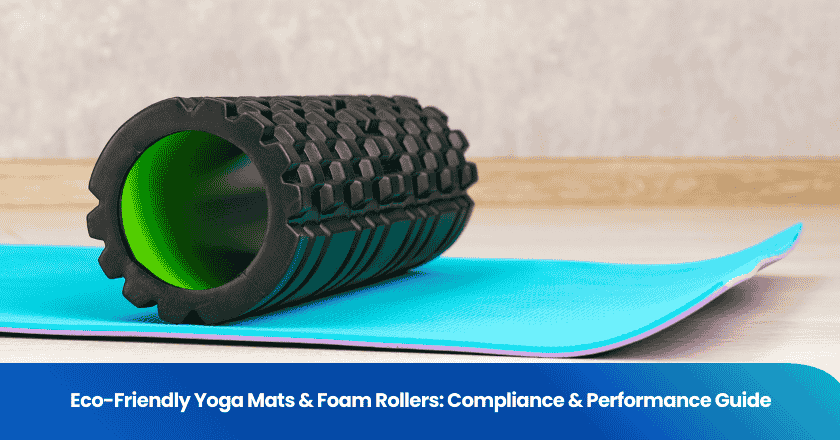
As a quality controller, you are responsible for ensuring product and service excellence. When considering what does quality controller do, your role involves examining processes, setting standards, and making sure outcomes meet strict requirements. Understanding what does quality controller do is essential, as quality control plays a vital role in reducing defects, saving costs, and improving customer satisfaction. For example, implementing statistical methods like Six Sigma can reduce defects to less than 3.4 per million opportunities. Additionally, prevention investments in quality control lead to fewer failures, less waste, and stronger business performance.
Key Takeaways
- Quality controllers ensure products and services meet strict standards, enhancing customer satisfaction.
- Key responsibilities include inspecting materials, monitoring production, and testing finished products.
- Investing in quality control reduces defects, saves costs, and improves overall business performance.
- Certifications like Certified Quality Inspector (CQI) can boost your career in quality control.
- Effective quality control leads to fewer customer complaints and higher operational efficiency.
What does quality controller do
Core Responsibilities
When you step into the role of a quality controller, you take on a range of job duties that keep standards high and customers satisfied. Your main focus is to make sure every product or service meets strict requirements before it reaches the customer. You handle a variety of tasks of quality control, from inspecting raw materials to monitoring production lines and testing finished products. These job duties require you to pay close attention to detail and use strong problem-solving skills.
Here is a table that summarizes the most common responsibilities you will manage as a quality controller:
| Responsibility | Description |
|---|---|
| Inspecting raw materials | Ensuring that the materials used in production meet quality standards. |
| Monitoring production processes | Overseeing the production line to maintain quality throughout the manufacturing process. |
| Testing finished products | Conducting tests to verify that the final products meet required specifications and standards. |
| Developing quality control procedures | Creating guidelines and processes to maintain quality standards across the organization. |
| Training employees on quality control best practices | Educating staff on effective quality control methods and practices. |
| Identifying and resolving quality issues | Working collaboratively with other departments to address and rectify quality-related problems. |
| Using specialized equipment and software | Employing tools and technology to assist in quality control tasks. |
| Attention to detail and problem-solving skills | Utilizing strong analytical skills to detect issues and implement solutions effectively. |
You also take on project planning and execution, lead teams, and collaborate with other departments. Your job duties often include process improvement and innovation, which means you look for ways to make production more efficient and products more reliable. You may also address customer concerns directly, ensuring that any issues are resolved quickly and effectively.
Tip: If you want to advance in this field, consider earning certifications such as Certified Quality Inspector (CQI) or Six Sigma. These credentials show your expertise in quality control and can open doors to higher-level positions.
Role in Quality Control
You play a central role in quality control by making sure products and services meet defined standards. You do this by establishing quality objectives, developing quality management plans, and executing thorough testing. You monitor key performance indicators to track how well processes are working and where improvements are needed.
Some of the main processes you use to ensure standards include:
- Testing processes to evaluate effectiveness.
- Identifying and correcting problems through regular tests.
- Collecting and analyzing data to assess performance.
- Documenting findings to share best practices.
- Implementing corrective measures to prevent future issues.
- Training employees to maintain high standards.
You also help your company comply with regulatory standards. For example, in industries like pharmaceuticals, you make sure drugs are manufactured safely and meet all legal requirements. You create and follow a Quality Control Plan (QCP) to identify risks and develop strategies to address them. This approach is essential for maintaining compliance and protecting both the company and its customers.
To measure your effectiveness, you track key performance indicators such as:
| KPI Description | Purpose |
|---|---|
| On-time audit completion rate | Ensures all critical areas are monitored regularly |
| Number of non-compliances per area | Measures areas needing improvement |
| Percentage of non-compliances receiving follow-up | Tracks effectiveness of corrective actions |
You also monitor on-time completion of scheduled maintenance and the ratio of planned to unplanned maintenance activities. Downtime as a percentage of total operating time is another important metric.
You face challenges in this role, such as delays caused by slow production, broken parts, or supplier issues. Sometimes, health and safety inspections can halt production. You must also ensure that all employees receive proper training and follow standardized procedures. Consistency in documentation and quality control across suppliers and contractors can be difficult, but your attention to detail helps overcome these obstacles.
Quality control inspectors
Inspection Tasks
As a quality control inspector, you play a critical role in maintaining high standards throughout the production process. You examine products at different stages, ensuring that each item meets strict quality requirements. Your daily tasks involve a variety of inspections, from checking raw materials before production to evaluating finished goods before delivery. You help prevent defective products from reaching customers, protecting your company's reputation.
You notify supervisors immediately when you detect issues and coordinate with them to resolve problems. Your responsibilities extend beyond manufacturing. In the pharmaceutical sector, you follow Good Manufacturing Practices and comply with agency standards. In the food industry, you focus on safety testing, traceability, and regular audits. In construction, you ensure compliance with building codes and safety regulations. You adapt your inspection methods to fit the unique needs of each sector.
Tip: Regular inspections and early detection of defects help you maintain consistent quality and reduce costly recalls.
Testing Methods
You rely on a range of testing methods to verify product quality and process reliability. You examine products using visual inspections, sampling, and advanced analytical techniques. You use Six Sigma to reduce defects and improve consistency. Failure Mode and Effect Analysis helps you identify potential problems before they occur. Control charts allow you to monitor process stability over time.
Here are some widely used testing methods in quality control:
- Inspection: You examine products for defects or deviations from specifications.
- Sampling: You inspect a representative sample from each batch to make informed decisions.
- Root Cause Analysis: You identify the underlying causes of quality issues.
- Design of Experiments: You test multiple variables to determine their impact on product quality.
You minimize errors by following proper procedures at every stage. During the pre-analytical stage, you label and store samples correctly. In the analytical stage, you use well-maintained equipment and accurate reagents. In the post-analytical stage, you ensure calculations and interpretations are precise. Your attention to detail and technical skills help you deliver reliable results.
You use these qualifications and methods to ensure every inspection during production meets the highest standards. Your work supports the overall quality control process and helps your organization deliver safe, reliable products.
Industries for Quality Control
Manufacturing
You play a vital role in manufacturing by maintaining strict quality control throughout the production process. You monitor every stage, from sourcing raw materials to final product inspection. Quality control helps you prevent inefficiencies and errors, protecting your company's reputation and customer trust. When you identify defects or deviations, you act quickly to resolve them. You also face challenges such as supply chain variability, regulatory complexity, and human error.
The table below highlights common challenges in manufacturing quality control:
| Challenge | Description |
|---|---|
| Supply Chain Variability | Global sourcing increases inconsistency. Many manufacturers face supplier-related quality issues. |
| Regulatory Complexity | Compliance with standards requires meticulous documentation. Manual processes can lead to errors. |
| Human Error | Even skilled workers make mistakes. Automated systems help reduce flaws. |
| Data Silos | Disconnected systems delay defect detection. Integrated software improves visibility. |
You use quality control processes to ensure products meet standards and reduce recalls. In recent years, strict checks have helped avoid financial penalties and improved market competitiveness. You understand that poor quality control can lead to increased costs and supply chain disruptions.
Impact of Quality Control
Product Quality
You drive improvements in product quality by implementing effective quality control practices. When you monitor production closely, you catch defects early and prevent them from reaching customers. You use in-line inspections and advanced technologies to identify issues before they escalate. This approach leads to higher first-pass yield rates and fewer customer complaints. You select materials that meet strict standards, which ensures durability and compliance. Pre-shipment inspections help you catch defects before products leave the facility, minimizing returns and protecting your reputation.
You notice that effective quality control leads to early defect identification. This ensures that every product meets quality standards and reduces the likelihood of returns or complaints. As a result, you boost customer satisfaction and loyalty.
- Higher first-pass yield rates in manufacturing.
- Fewer customer complaints in service organizations.
- Reduced rework costs due to improved quality control.
Business Outcomes
You see a direct link between quality control and business success. When you maintain high standards, you build a strong reputation and attract new customers. Companies known for effective quality management gain trust from customers and stakeholders. High-quality offerings allow you to charge premium prices and expand your revenue share. You minimize costly rework and reduce warranty claims, which lowers operational costs.
Note: Quality control ensures compliance with regulatory standards, helping you avoid legal penalties and recalls.
You measure the return on investment for quality control initiatives by tracking financial benefits and project costs. For example, a Six Sigma project costing $50,000 that saves $200,000 yields a 300% ROI. You monitor key performance indicators such as output rates, quality improvements, and reduced error frequencies to assess productivity gains.
- Quality management ensures products and services meet specific standards, boosting customer satisfaction.
- It leads to reduced costs and enhanced efficiency, minimizing waste and avoiding costly rework.
- A good reputation in quality opens new market opportunities and attracts partnerships.
You play an essential role in quality management by applying quality assurance throughout every stage of production. Your expertise in quality control process and assurance protects business reputation and ensures customer satisfaction. You use quality control methods and quality control techniques to maintain high standards. Quality assurance supports companies by reducing risks and improving outcomes. You help organizations achieve excellence through effective assurance and quality management. Understanding quality assurance benefits anyone interested in product quality or business operations.
Quality assurance and quality management drive success for both companies and customers.
FAQ
What skills do you need to become a quality controller?
You need strong attention to detail, analytical thinking, and good communication skills. You should understand quality standards and know how to use inspection tools. Problem-solving abilities help you address issues quickly.
How do you measure quality in a production process?
You use key performance indicators like defect rates, on-time audits, and customer complaints. You also track process stability with control charts and monitor compliance with established standards.
What is the difference between quality control and quality assurance?
Quality control focuses on inspecting products and correcting defects. Quality assurance involves planning and managing processes to prevent defects. You use both to maintain high standards.
Why is documentation important in quality control?
Documentation helps you track inspections, record test results, and prove compliance with regulations. It also supports continuous improvement by identifying trends and recurring issues.
Grow your business with TradeAider Service
Click the button below to directly enter the TradeAider Service System. The simple steps from booking and payment to receiving reports are easy to operate.



